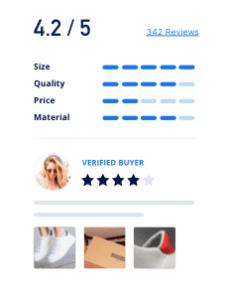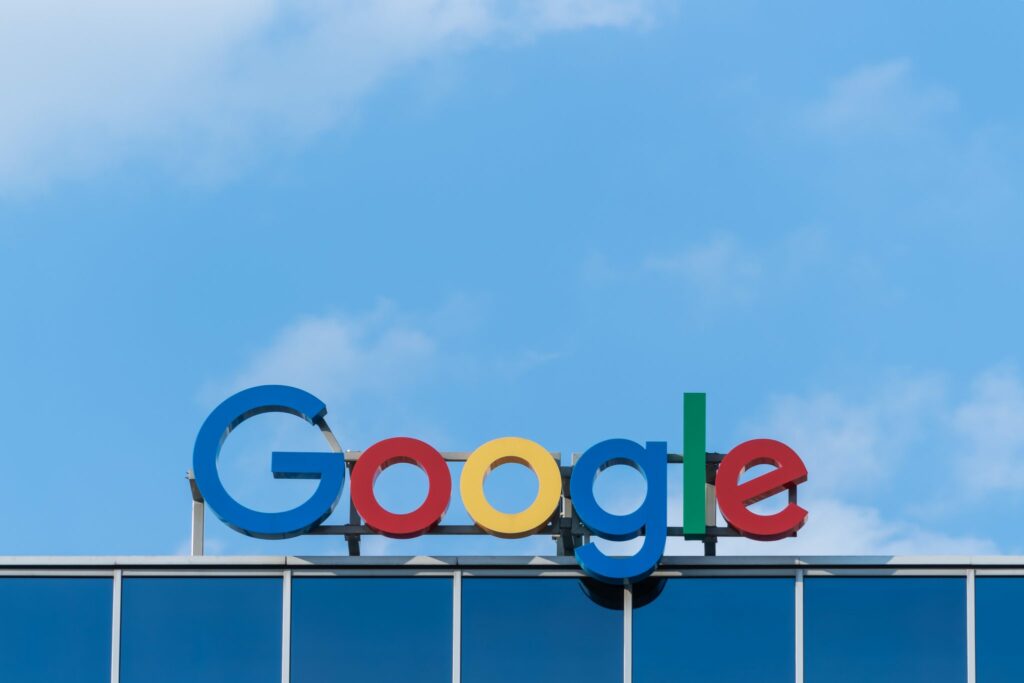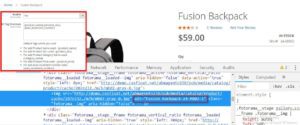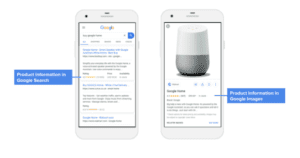In recent times, Google images have proven to be a sure method to accelerate organic traffic for e-commerce websites. They act as a fishing hook to attract potential customers to retail sites and also play an essential role in driving conversions. Humans are visual beings, which is why attractive imagery and content is far more entertaining to us. For example, those searching for a product on Google will come across several relevant images, these become selling points. But this only works if you are optimising images.
According to eMarketer’s Visual Commerce 2017 report, 72% of users in the U.S. prefer to look up images online before making a purchase.
Tips To Optimising Images To Increase Sales
 Image source: https://business.pinterest.com/en/blog/how-to-think-about-targeting-on-pinterest
Image source: https://business.pinterest.com/en/blog/how-to-think-about-targeting-on-pinterest
It is better to begin optimising images at the time they are published because you will eventually have to do it as it is an important SEO practice. this is because the process can become hectic if having to do it all at once.
Let’s take a look at some tips that you can use to optimize your product images for Google to elevate organic traffic, and thereby increase sales.
Tip#1: Rename the file & alt tags
Image Source: bignulled.com
Google relies on your e-commerce website’s code to analyse if there is any visual content on the webpage that can contribute to the user experience and overall value of the page. An AI or formula can’t view the images and categorize them. It requires clear alt tags to distinguish and correctly place them in the relevant search result. Thus, you need to ensure that all the product images that are present on your website have descriptive file names and accurate alt tags.
Tip#2: Post unique & attractive images
 Image Source: https://www.bigcommerce.com/blog/how-to-rock-product-photography-on-a-budget/#what-is-product-photography
Image Source: https://www.bigcommerce.com/blog/how-to-rock-product-photography-on-a-budget/#what-is-product-photography
Product photography is a specialised branch of imagery like Food photography, Beauty Photography, and Forensic Photography. Every photographer tries to present impactful imagery, yet none have the skill, talent, or eye to perfectly capture the essence of your product. Aside from snapping an attractive photograph, photographers also require expert editing skills to create the perfect image.
It should be said, that any image produced should be done to stand out amongst the rest. Your image needs to attract the eye of users, so they are tempted to visit your website.
Tip#3: Reduce the load time
 Image Source: https://howtogetonline.com/how-to-fix-a-slow-website.php
Image Source: https://howtogetonline.com/how-to-fix-a-slow-website.php
Loading time has the power to make or break your user experience. Visuals that take too long to load can affect the conversion rate and bounce rate of the website, leading to fewer sales. Users can get bored or irritated and end up abandoning a website that takes a long time to load, in which case they go to another website that offers the same service. Therefore, you must reduce the size of your image before posting them, so they take lesser time to load. The smaller the size of the image, the higher the WordPress image speed it will have.
Regardless, you need to be careful when compressing the images because compression can ruin the image quality.
“Finding the perfect balance between the size and quality of the image is imperative. Too big file or unappealing image, both will kill your user experience.” – Steven Mark (SEO Consultant at CrowdWriter)
Tip#4: Add product information
Image Source: https://www.searchenginejournal.com/google-is-letting-all-online-retailers-upload-product-data-to-search-results/294949/
Adding to-the-point and accurate information in your image description can also help attract users who will visit your website to find out about the product specifications and more.
Remember, once a user lands on your website, the chances of them making a purchase will increase.
A bonus tip
The above four tips focused on the images you had posted on your website. However, optimising your product images also include the ones posted by others which could lead back to you. Don’t understand? Check out our final tip.
Tip#5: Make use of user-submitted images
 Image Source: https://www.yotpo.com/
Image Source: https://www.yotpo.com/
Ask satisfied customers to submit reviews or recommendations for your product, accompanied by a good image(s) that they have taken. They can post their thoughts about the product on customer review sites like Yelp, or on social media. These images, along with your interaction with the customers on these platforms, will allow you to leverage the images submitted by users, as they will also appear in Google Image Search.
Googling Product Images
 Image source: https://www.eurodiaconia.org/2016/03/moving-from-what-to-how/
Image source: https://www.eurodiaconia.org/2016/03/moving-from-what-to-how/
People search for products online to read reviews and product details, before going to the store to make a purchase. Their purpose is to look at the product beforehand, so they can save a trip to the store if they don’t like it. Even more, they might want to have a closer look at an image, so they will visit the website where they will see the great deal you are offering on the product. Chances are, they will opt for this deal right then and there.
In the past, while visiting image source, users could click on ‘View Image’ and look at the enlarged photo for perusal or saved it to their devices. However, in 2018, Google removed its ‘View Image’ button, which resulted in a rise in organic traffic for online shopping websites, because now users had to visit the website to properly view the image.
The Importance Of Optimising Images
 Image source: https://www.rationalplan.com/projectmanagementblog/importance-of-project-risk-management/
Image source: https://www.rationalplan.com/projectmanagementblog/importance-of-project-risk-management/
Organic marketers have to compete with paid product ads that now appear in Google Image searches, which have become a part of the Google Shopping Search Network. To ensure that your product images appear on top in Google Image Search, you need to make sure that they are optimized. There is one misconception that business owners face, which is, if their website appears on top of the search results, their images will too. However, this is not the case. Images can be optimized to appear on top in the Google Image Search, even if their source is not on the first page of the results. This practice doesn’t violate any of Google’s guidelines; it is 100% white hat SEO.
Speak with a SpecialistOur Google Shopping Services
Author Bio:
Amanda Jerelyn is an expert at devising digital marketing strategies and solutions that are tailored to suit the needs of her individual and business clients. She is the founder of Guide2Write and is currently serving as a Marketing Manager at King Essay.









